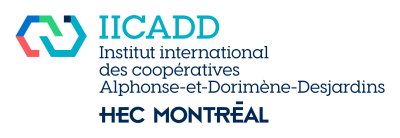Author(s): Inmaculada Buendía-Martínez, Yenni Redjah, Jean Roy
Subject: Financial services cooperatives, Canada
Date of publication: December 2021
“Defaults by individuals were at the source in the last financial crisis, thus the need to fully understand credit risk from personal borrowers. Expected loss from credit is usually decomposed in probability of default, loss given default and exposure at default (EAD), the latter factor being yet the least investigated. This research seeks to contribute by identifying the determinants of EAD in the Canadian financial cooperative sector that had exhibited great resiliency during the crisis. The sample consisted of more than 11000 cases of default occurring between 2003 and 2008 on revolving lines of credit granted to individuals. The results show that several factors are significant, namely the borrower’s age, the exposure limit, the amount drawn, the interest rate applied on the line of credit and the utilization behavior. Moreover, the relationship of EAD to macroeconomic factors points to it. Overall, more than 50% of the variance of EAD can be explained. In sum, the research sheds light on a credit factor, EAD on credits to individuals, which has remained rather obscure up to now. The improved understanding of EAD can lead to better risk modeling, better credit management and, potentially, improve financial stability.”

